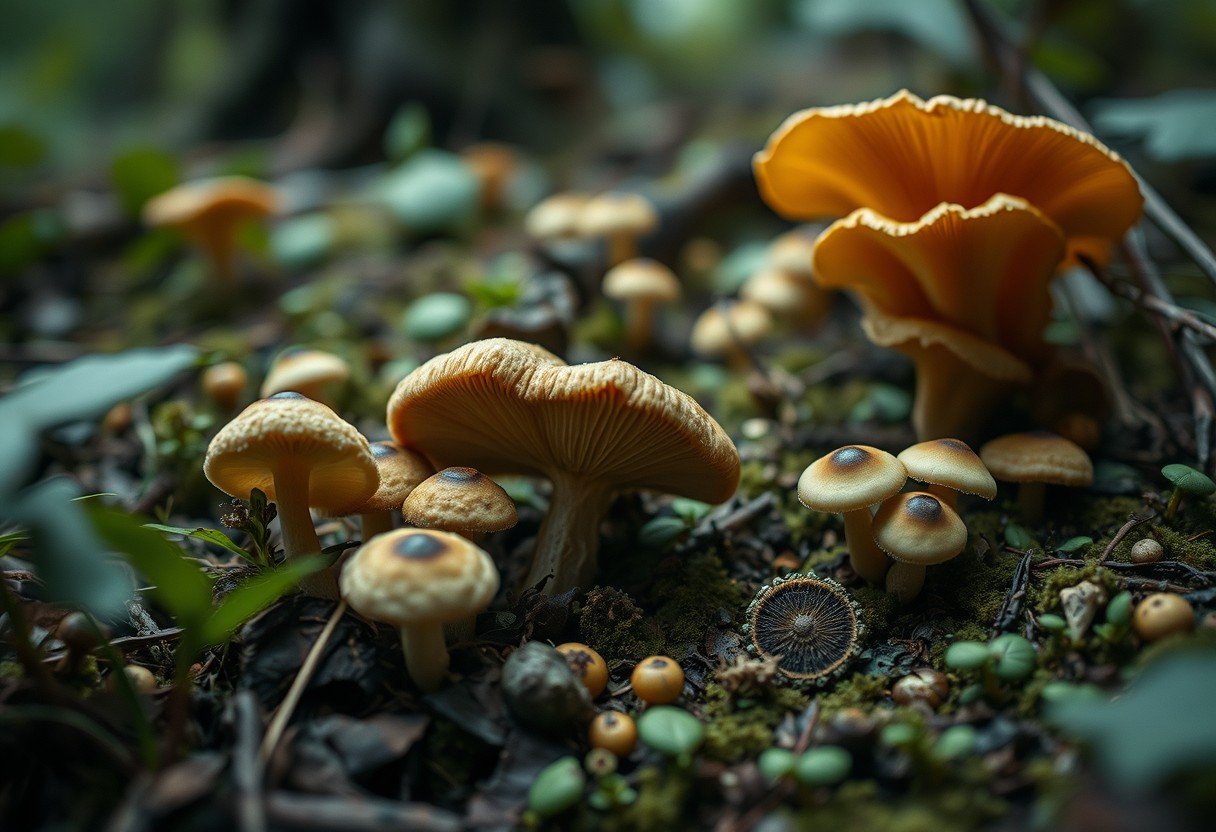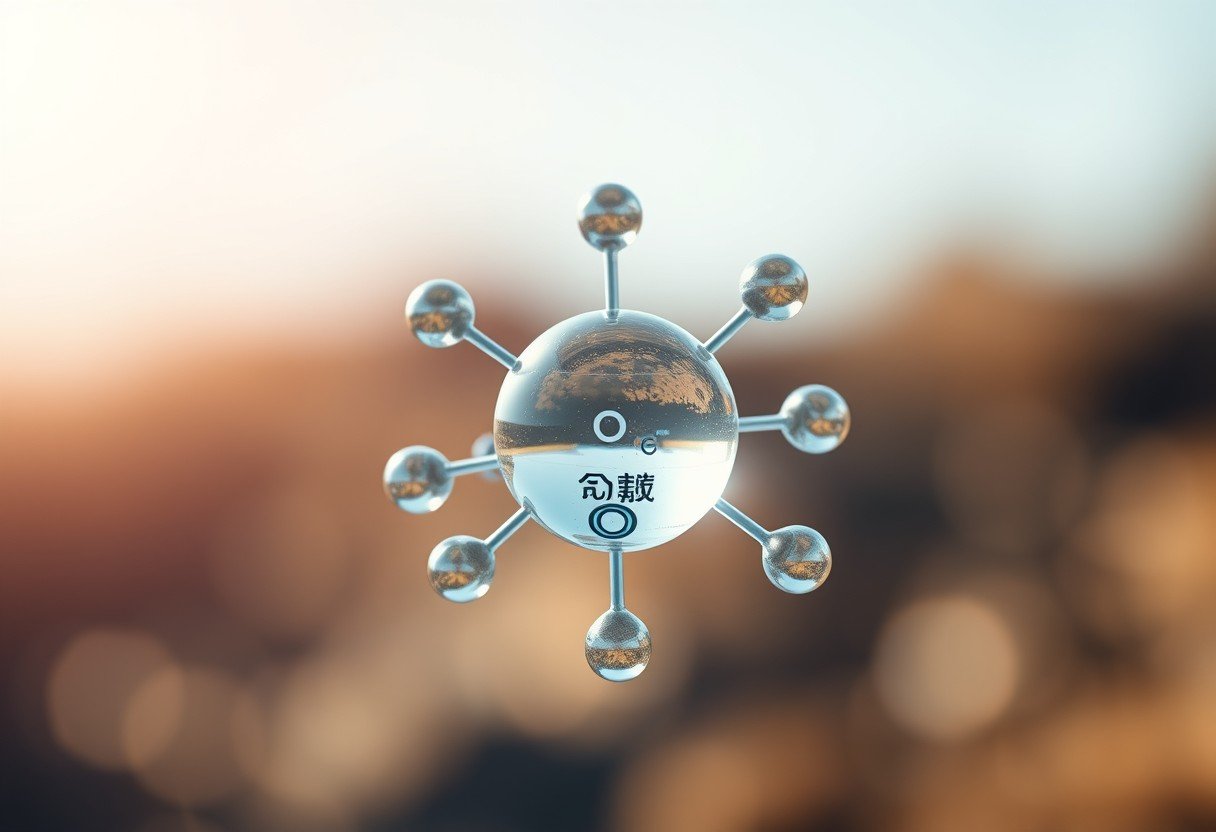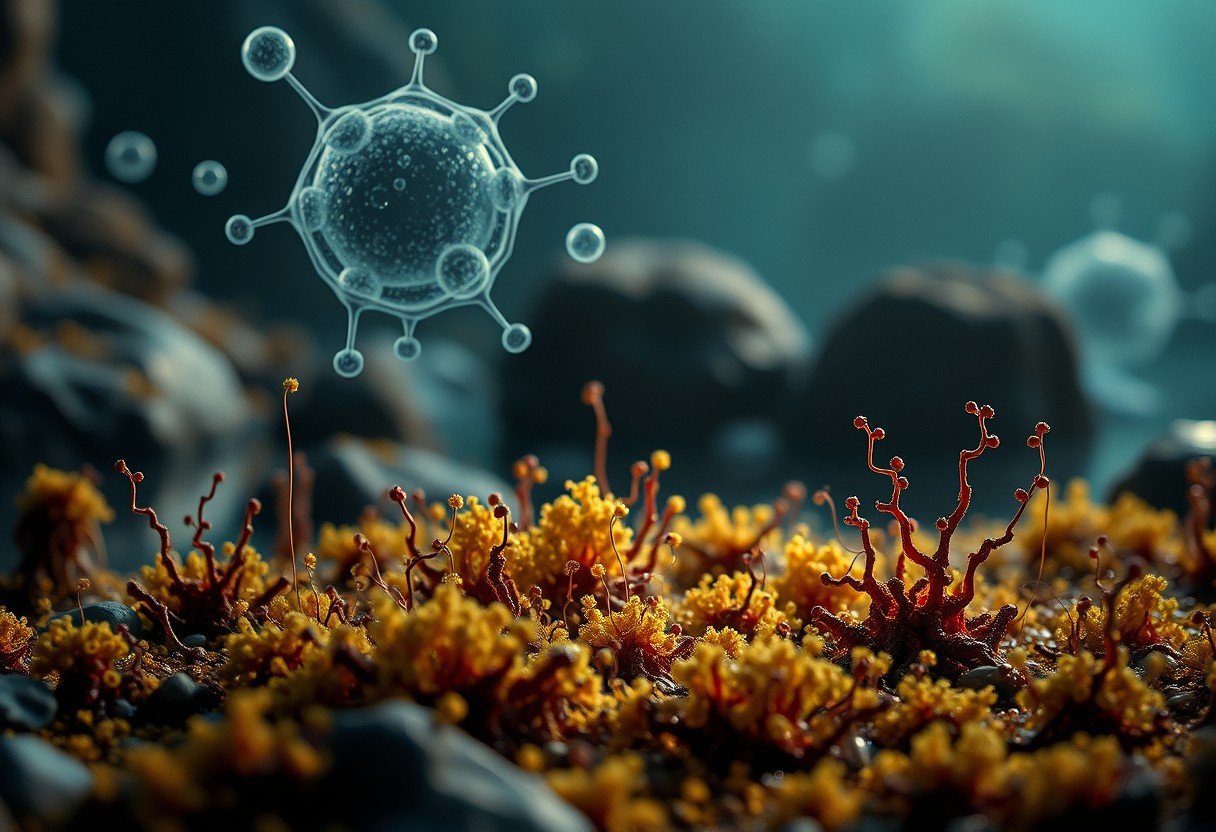You might be surprised to learn that a tough, versatile polysaccharide provides the structural framework for millions of species, from tiny insects to mushrooms. This compound is chitin, a complex carbohydrate that serves as nature’s building block in the animal and fungal kingdoms. It is responsible for the rigid exoskeletons of arthropods and the sturdy cell walls of fungi, playing a vital role in their protection, support, and survival.
What Exactly is a Polysaccharide?
Before diving into chitin, it’s helpful to understand what polysaccharides are. Think of them as long chains of sugar molecules, known as monosaccharides, linked together. These complex carbohydrates are essential biomolecules in virtually all living things.
Their structure can be simple and linear or highly branched, which gives them different properties and functions. Based on their role, they are generally divided into two main categories.
One category is storage polysaccharides, like starch in plants and glycogen in animals. These molecules store energy that can be broken down and used when needed. The other category is structural polysaccharides, such as cellulose in plants and, of course, chitin in fungi and animals. These provide rigidity and shape to cells and organisms.
Introducing Chitin: The Star of the Show
Chitin is a long-chain polymer made of repeating units of N-acetylglucosamine, which is a modified form of glucose that contains nitrogen. This nitrogen component is a key feature that distinguishes chitin from other structural polysaccharides like cellulose.
This unique chemical structure allows chitin chains to form strong hydrogen bonds between them. This bonding creates tough, resilient fibers that provide excellent structural support and protection.
Its strength and durability make it an ideal material for building protective outer layers.
Chitin’s Crucial Role in the Animal Kingdom
In the animal kingdom, chitin is most famous for forming the exoskeletons of arthropods. This massive group includes insects, spiders, and crustaceans like crabs and lobsters. The exoskeleton acts like a suit of armor for these creatures.
This hard outer shell provides more than just defense against predators. It also offers physical support for the body, prevents water loss, and serves as an attachment point for muscles, allowing for movement. Without chitin, these animals would lack the structural integrity needed to survive in their environments.
As these animals grow, they must shed their old chitinous exoskeleton and form a new, larger one in a process called molting.
The Structural Backbone of Fungi
While plants use cellulose to build their cell walls, fungi rely on chitin. Chitin is the primary structural component of fungal cell walls, giving them rigidity and protecting the cells from bursting due to internal turgor pressure. This strength allows fungi, like mushrooms, to grow upwards from the soil and maintain their shape.
The chitin in the cell wall also acts as a defensive barrier. It helps protect the fungus from environmental stresses and attacks from other microorganisms.
Furthermore, chitin is involved in various stages of the fungal life cycle, including cell division and the formation of spores. The synthesis and breakdown of chitin are carefully controlled processes that allow fungi to grow, adapt, and interact with their surroundings effectively.
How does Chitin Compare to Other Polysaccharides?
Understanding the differences between major polysaccharides helps clarify chitin’s unique role in nature. While all are built from sugar units, their composition and function vary significantly. Chitin is a structural powerhouse, whereas others are designed for energy storage.
The table below provides a clear comparison between chitin and two other well-known polysaccharides: cellulose and glycogen.
| Feature | Chitin | Cellulose | Glycogen |
|---|---|---|---|
| Monomer Unit | N-acetylglucosamine | Glucose | Glucose |
| Primary Function | Structural Support | Structural Support | Energy Storage |
| Found In | Fungal cell walls, arthropod exoskeletons | Plant cell walls | Animal liver and muscles |
| Key Difference | Contains nitrogen | Most abundant organic polymer on Earth | Highly branched for quick energy release |
As you can see, the presence of nitrogen in chitin’s building blocks gives it distinct properties compared to the glucose-based structures of cellulose and glycogen. This makes it particularly effective for creating durable, protective materials in the biological world.
Surprising Applications of Chitin in Modern Life
The unique properties of chitin and its derivative, chitosan, have not gone unnoticed by science and industry. Its biocompatibility, biodegradability, and non-toxicity make it a valuable resource in a wide range of fields.
Researchers are continuously finding new and innovative ways to use this abundant natural polymer. From medicine to agriculture, chitin is helping to create sustainable and effective solutions.
- Biomedical Field: Chitin is used to create surgical sutures that dissolve over time, wound dressings that promote healing, and scaffolds for tissue engineering.
- Agriculture: It can be used as a natural pesticide and fertilizer, enhancing plant defenses against fungal infections and promoting growth without harmful chemicals.
- Water Purification: Chitosan can bind with heavy metals and other impurities, making it an effective agent for filtering and purifying water.
- Food Industry: It serves as a natural food preservative, extending shelf life, and as a thickening agent in various food products.
These applications highlight the incredible versatility of a substance that has been supporting life for millions of years.
Frequently Asked Questions
Which polysaccharide is a key structural part of many animals and fungi?
Chitin is the crucial polysaccharide that provides structural support in the cell walls of fungi and the exoskeletons of arthropods, such as insects and crustaceans.
What is chitin made of?
Chitin is a polymer composed of repeating units of a modified sugar called N-acetylglucosamine. This sugar derivative contains nitrogen, which gives chitin unique properties compared to other polysaccharides like cellulose.
Is chitin the same as cellulose?
No, they are different. Although both provide structural support, chitin is made from N-acetylglucosamine units and contains nitrogen, while cellulose is made from glucose units. Cellulose is found in plants, whereas chitin is found in fungi and animals.
Can humans digest chitin?
Humans cannot digest chitin effectively as we lack the necessary enzyme, chitinase. However, some research suggests it may act as a dietary fiber, potentially benefiting gut health.
What are some modern uses for chitin?
Chitin and its derivative, chitosan, are used in various applications, including biodegradable plastics, medical wound dressings, water purification systems, and as a natural pesticide in agriculture due to their biocompatible and non-toxic nature.








Leave a Comment